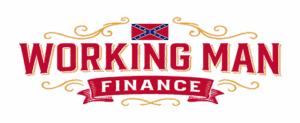Bankers’ Accordion unveils the complex orchestration behind the banking industry’s mechanisms.
It delves into the intricate interplay of financial instruments, revealing how banks, through strategic maneuvers and leveraging the fractional reserve system, expand their monetary capabilities far beyond the confines of actual deposits.
This exploration not only unveils the inner workings of banks but also sheds light on the broader implications of this system on the financial realm, offering insights into the creation and distribution of credit money that profoundly influences economies.

Unveiling the Banking Maneuver: How Ten Citizens Embarked on a Financial Challenge
In a fascinating financial venture, ten citizens joined forces, each contributing $10,000 to create a substantial pool of $100,000.
Their ambitious goal? To challenge a bank.
Navigating the bureaucratic landscape, they sought a charter from the United States Government.
Success crowned their efforts as the Government granted them permission, with one crucial stipulation—they had to employ the $100,000 to acquire an equivalent value in United States bonds.
Securing Bonds and Unraveling Government Interest
The acquired bonds, each bearing a 3% interest rate, found a secure abode in a sealed package under the custody of the United States Government.
This interest, a considerable sum of $3,000, became a semiannual obligation that the Government owed to these innovative banks.
Government’s Generosity: An Infusion of Bills
But the story doesn’t end there. In an unexpected turn of events, the paternal Government intervened once more.
It directed the United States Bureau of Engraving to dispense a generous amount of $90,000 to these enterprising bankers.
The denominations included bills ranging from five to twenty, laying the foundation for the next phase of their daring venture.

Hometown Bank’s Grand Debut: A Day of Floral Splendor
With newfound resources, the bankers triumphantly returned to their “Hometown” and made a grand announcement—the opening of their bank.
However, the inaugural day wasn’t characterized by traditional banking transactions.
Instead, it became a spectacle of welcoming visitors, enveloped in the delightful fragrance of meticulously arranged baskets of flowers.
This captivating saga unveils the intricacies of a financial maneuver that challenges conventional banking norms, demonstrating the dynamic relationship between citizens, the government, and the financial system.
Empowering Businesses: The Sequel to Tenacious Banking Ventures
As the sun rises on the second day of their audacious banking venture, the ten citizens, armed with their newfound resources, brace themselves for the next phase.
In a dramatic turn, Jim Smith, a visionary manufacturer, strides into the bank, expressing his need for a $10,000 loan to expand his thriving factory.
The bank’s president, displaying astute financial acumen, scrutinizes the books of the Smith Manufacturing Company, valuing it at approximately $100,000.
The president, in a shrewd negotiation, offers Mr. Smith the coveted loan on the condition that he mortgages his $100,000 factory.
Additionally, Mr. Smith is required to designate the bank as his exclusive depository.
Mr. Smith, eager to fuel the growth of his enterprise, accepts the terms and secures the loan. However, the $10,000 doesn’t find its way into Mr. Smith’s hands.
Instead, the bank president employs his unique financial parlance, recording the transaction as $10,000 deposited, a euphemism for the $10,000 loan extended to Mr. Smith.

Community Buzz: Deposits Surge After Bold Financial Moves
The president further equips Mr. Smith with a new checkbook, instructing him to inscribe checks totaling $10,000.
In the aftermath of this transaction, the bank president finds himself in possession of the original $100,000, now complemented by a mortgage on Mr. Smith’s $100,000 business.
Simultaneously, a wave of local enthusiasm sees Tom Jones, Fred Doe, Pat Brown, and numerous other neighbors depositing modest sums in the bank.
The cumulative deposits amount to $50,000, propelling the bank’s influence and setting the stage for a cascade of financial activities in the community.
The Thriving Portfolio: Beyond Original Investments
In the unfolding saga of our daring ten citizens turned bankers, the plot thickens as the bank president finds himself at the helm of a burgeoning financial empire.
With the original $100,000 as their bedrock, coupled with the substantial mortgage from Jim Smith amounting to another $100,000, the bank president’s coffers are already a force to be reckoned with.
However, this is just the prelude to a financial crescendo.
Ingenious Financial Maneuvers: Loans Galore
As other enthusiastic citizens queue up for loans, the bank president, seemingly infected by the audacious spirit of the middle-century strongbox era, takes a bold step.
With a penchant for exceeding limitations, he extends loans to the community, reaching an unprecedented sum of $1,000,000.
A strategic move, perhaps, as he continues to secure mortgages from borrowers, potentially accumulating a staggering $2,000,000 in mortgage values.
Navigating the Legal Labyrinth: A Glimpse into the 1935 Banking Act
In a twist of fate, our enterprising bank president, thumbing through the pages of the 1935 Banking Act, stumbles upon a loophole that could elevate his financial prowess.
The revelation: leveraging Smith’s note, backed by a mortgage, and various other assets, at the nearest Federal Reserve Bank.
Federal Reserve Ballet: A Symphony of Deposits and Loans
Simultaneously, the bank president aligns with Federal Reserve Bank laws, depositing around $130,000 (13% of $1,000,000) with the Federal Reserve Bank, as mandated.
Seizing the moment, he seeks financial backing from Federal Reserve bankers, leveraging the notes, mortgages, and securities deposited by borrowers in his hometown bank.
The Genesis of Abundance: Multiplying the Investment
In an orchestrated dance with the Federal Reserve (Central) banker, a staggering $50,000 is conjured and deposited into the account (reserves) of the hometown bank on the Federal Reserve Bank’s books.
This infusion catapults the lending capacity of the hometown bank, enabling them to extend loans to the community to the tune of $1,500,000 – a fifteenfold surge from the initial $100,000 invested by the stockholders.
As our financial odyssey continues, the contours of an intricate financial tapestry are unveiled, showcasing the dynamic interplay between local banks, borrowers, and the Federal Reserve system.
Stay tuned as we delve deeper into this financial symphony, deciphering the nuances that shape our economic landscape.
Crunching Numbers: A Financial Harvest
As the curtain rises on the inaugural year of our enterprising bank president’s financial venture, a compelling figure emerges – a staggering $75,000 in interest collected.
How is this feat accomplished, you may wonder? The answer lies in the meticulous orchestration of loans at an average interest rate of 5%.

Beyond the Ledger: Profits and Prosperity
Amidst the arithmetic of interest rates and loan portfolios, the bank president stands as the master conductor, adeptly maneuvering the financial symphony.
With an astute eye on the bottom line, he retains everything beyond the costs of rent, personnel, advertising, and the elegant touch of white carnations.
A maestro in his own right, he has not only created wealth but also reaped abundantly, sowing seeds in the fertile soil of credit money.
Unveiling the Enigma: Credit Money and its Charms
The phenomenon at play is none other than the creation of credit money – a financial alchemy where money is conjured into existence and set into circulation.
In this intriguing dance of numbers, our bank president has reaped where he did not sow, leaving us to ponder the allure of such financial wizardry.
The tantalizing question lingers – who wouldn’t want to step into the shoes of a banker capable of creating ten times more money than one actually possesses, lending it out at a modest 5% interest?
Constitutional Compass: Navigating the Banking Landscape
Yet, as we marvel at this financial spectacle, a crucial reflection emerges. Does this align with the core tenets of our Constitutional system?
In an era where we yearn for banks to be true custodians of U.S. money, the question of authenticity and alignment with constitutional principles looms large.
Join us as we delve deeper into the intricacies of our financial system, exploring the delicate balance between financial ingenuity and constitutional integrity.

Harmonizing Financial Ingenuity and Constitutional Principles
In this intricate symphony of financial maneuvers, the “Bankers’ Accordion” has revealed a captivating dance between citizens, the government, and the banking system.
As we marvel at the audacious ventures of ten citizens turned bankers, the financial crescendo echoes a complex harmony.
The creation and distribution of credit money, the leveraging of legal frameworks, and the orchestration of loans at a staggering scale provoke both awe and contemplation.
However, as we celebrate the financial maestro’s ability to reap where he did not sow, a constitutional compass beckons.
Does this virtuoso performance align with the principles our nation holds dear?
